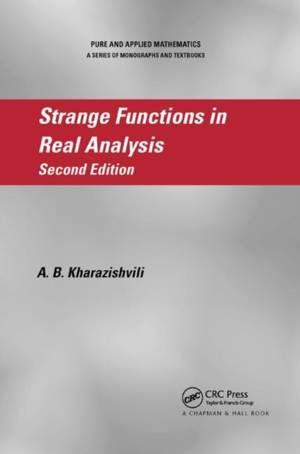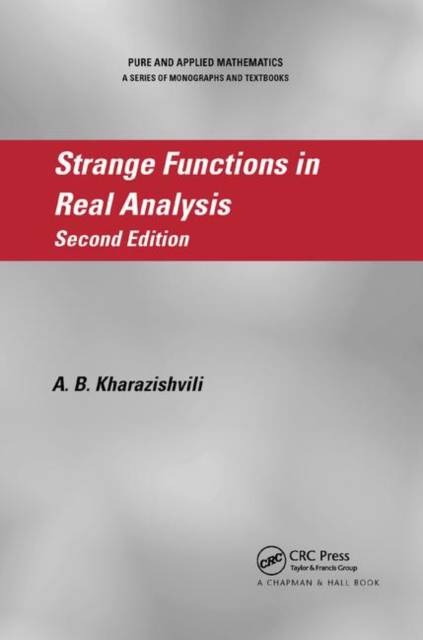
Bedankt voor het vertrouwen het afgelopen jaar! Om jou te bedanken bieden we GRATIS verzending (in België) aan op alles gedurende de hele maand januari.
- Afhalen na 1 uur in een winkel met voorraad
- In januari gratis thuislevering in België
- Ruim aanbod met 7 miljoen producten
Bedankt voor het vertrouwen het afgelopen jaar! Om jou te bedanken bieden we GRATIS verzending (in België) aan op alles gedurende de hele maand januari.
- Afhalen na 1 uur in een winkel met voorraad
- In januari gratis thuislevering in België
- Ruim aanbod met 7 miljoen producten
Zoeken
€ 83,95
+ 167 punten
Uitvoering
Omschrijving
Weierstrass and Blancmange nowhere differentiable functions, Lebesgue integrable functions with everywhere divergent Fourier series, and various nonintegrable Lebesgue measurable functions. While dubbed strange or "pathological," these functions are ubiquitous throughout mathematics and play an important role in analysis, not only as counterexamples of seemingly true and natural statements, but also to stimulate and inspire the further development of real analysis. Strange Functions in Real Analysis explores a number of important examples and constructions of pathological functions. After introducing the basic concepts, the author begins with Cantor and Peano-type functions, then moves to functions whose constructions require essentially noneffective methods. These include functions without the Baire property, functions associated with a Hamel basis of the real line, and Sierpinski-Zygmund functions that are discontinuous on each subset of the real line having the cardinality continuum. Finally, he considers examples of functions whose existence cannot be established without the help of additional set-theoretical axioms and demonstrates that their existence follows from certain set-theoretical hypotheses, such as the Continuum Hypothesis.
Specificaties
Betrokkenen
- Auteur(s):
- Uitgeverij:
Inhoud
- Aantal bladzijden:
- 432
- Taal:
- Engels
Eigenschappen
- Productcode (EAN):
- 9780367391461
- Verschijningsdatum:
- 5/09/2019
- Uitvoering:
- Paperback
- Formaat:
- Trade paperback (VS)
- Afmetingen:
- 152 mm x 226 mm
- Gewicht:
- 566 g

Alleen bij Standaard Boekhandel
+ 167 punten op je klantenkaart van Standaard Boekhandel
Beoordelingen
We publiceren alleen reviews die voldoen aan de voorwaarden voor reviews. Bekijk onze voorwaarden voor reviews.









